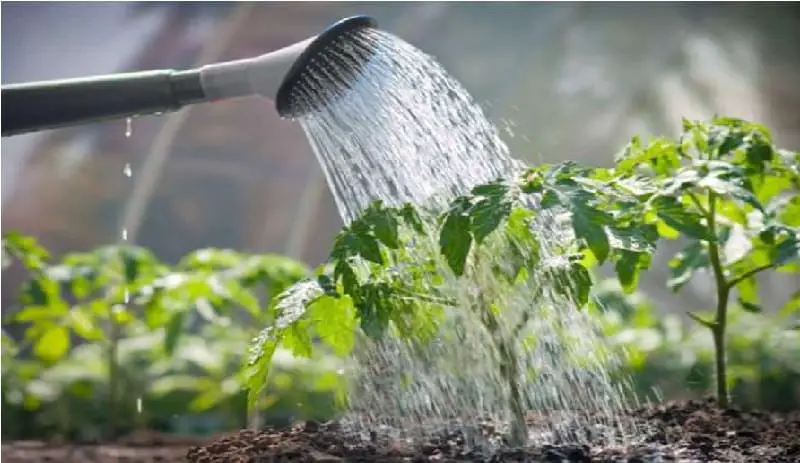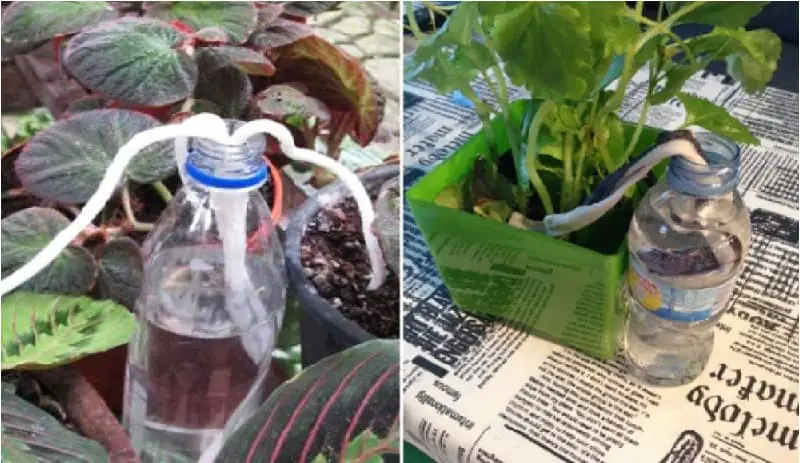For every plant-loving gardener it is well known that plants need water in order to live and grow. Depending on the type of plant, some need more and others less quantities of the precious liquid, with a frequency that varies depending on the type of plant. In many cases we are not aware of these simple parameters and this misinformation results in our plants not developing properly or, in the worst case, dying.
Lack of water also affects the plant depending on its growth stage. A leafy plant, also called succulents, can last for months without receiving water, but fruit trees, flowering plants and vegetables will not withstand 4 to 7 days without water.

In this new article I show you relevant information about how many days can plants go without water? In addition to various methods that supply water to your plants in an automated way.
A foolproof and practical method, which tops the list, is undoubtedly the use of self-watering containers. With this method you simply fill the reservoir and the mechanism will automatically water your plants for you. With this mechanism you can guarantee the watering of your plants for several days. Very useful if you have to travel or be away from your garden for a period of several days (The number of days will depend on the size of the reservoir and the charge of the device).

Types of plants.
The most important element to take into account to know how many days your plants can go without water; is undoubtedly to know what type of plant it is. Some plants such as cacti, or species that develop in arid areas, have the ability to withstand months, or even years, without being watered.
On the other hand, there are species that use a defense mechanism which consists of a lethargy. In this process, the plant seems to have dried up, as it looks lifeless, with no leaves and all its branches dry, but the roots remain alive and when they receive water they renew their leaves, stems and flowers.
Fruit and flower producing plants.
These plants are more delicate as far as water supply is concerned, since the process of bearing fruits and flowers demands a high consumption of water from the plant. This type of plants need a continuous water supply and are prone to die if this is not the case, as long as the lack of water exceeds 4 days.
Factors affecting plant vulnerability and hydration.
The size and maturity of your plant.
Plant size is a variable that is closely related to plant water consumption. Size is directly proportional to the plant’s water consumption. The larger the plant, the more water it needs. Water, along with other elements such as sunlight and soil minerals, are vital components for plants. A large plant demands a lot of these elements to maintain its foliage and fruit.
Another important point is the stage of growth of the plant. Depending on the stage of its growth, it will demand more or less water. The frequency of irrigation of the plant decreases when it matures because it absorbs more efficiently the water from the soil.
The soil where the plant is grown.
According to the percentage of humidity and the level of retention of the same by the soil where the plant is planted, it is inferred that the plant will last longer to be watered. Since, if the soil retains moisture levels well, the plant will absorb that moisture in the same proportion, thus prolonging the frequency of watering.
The composition of the soil must have a certain balance between clay, organic matter and sand in order to retain moisture for a longer period of time, but at the same time be able to drain excess moisture.
Plant spacing.
The space available between one plant and another is decisive to know how many days the plants can be without water. What affects the good absorption of moisture and nutrients. Process carried out by the roots of each plant. Taking this into account is vital for the growth of the plant because, if they are placed very close to each other, their roots will intertwine and will be in competition to obtain the minerals and moisture that are available in such little space.
It is good to leave a space in function of the maximum size that the plant can reach and proportional to the growth of its roots.
Alternative methods of plant self-watering.
Wick system.
The wick system is one of the most popular and easy to implement systems. It is widely used in situations where you are going to be absent for several days and you do not have a person to take care of your plants.
This system consists of the creation of wicks for each plant you have in your garden. It is prepared as follows:
1) Make a perforation in the soil, close to the plant with a sufficient depth to reach where the roots end and with a diameter for a cotton wick to enter.
2) Place one end of the wick all the way to the bottom of the hole.
3) Place the other end in a bucket of water next to the plant.
This system, although very simple, is very effective since it takes advantage of a condition that water has called capillarity. The cotton, being in contact with the soil, will absorb all the water in the bucket and will keep the plant hydrated for several days as long as the container is kept with water.

Drip irrigation system.
The drip irrigation system is a very basic and economical self-irrigation tool that provides a programmed periodic water supply. It consists of a container with water and a dispenser that is programmed according to the frequency of time required for watering.
This system is available in several presentations depending on the volume and amount of flow. With it you can program the number of times the system opens the supply and the volume of watering, thus ensuring that your plants have enough water during the time you are not present.
This system is readily available. You can find it in various hardware stores, gardening stores or any other place specialized in this area.

Prepare an organic mulch for the soil.
The so-called organic mulch is any surface made of any organic material such as dry leaves, wood scraps, grass clippings, etc.
Placing this mulch around our plants will reduce the direct impact of the sun on the soil surface. And as a consequence of this, the evaporation of water is significantly reduced, thus maintaining humidity all around the plant. This produces an umbrella effect with which our plants can go two to three days without water.
The most recommended way to apply this method is to water the plant with abundant water and then place the mulch with a layer of at least 2 inches thick. In this way our plant will be well hydrated for a few days.

Final words.
With this compact but useful article I have tried to compile the simplest and most economic methods to maximize the days that the plants of your garden can be without water. This is a simple section about the maintenance in terms of hydration of plants. Within the abundant world of gardening, it is one of the most important topics since it guarantees the life and growth of your plants in an optimal way.
I hope these tips will help you keep your garden in all its splendor and that it will be a reason for compliments in your meetings with family and friends.

